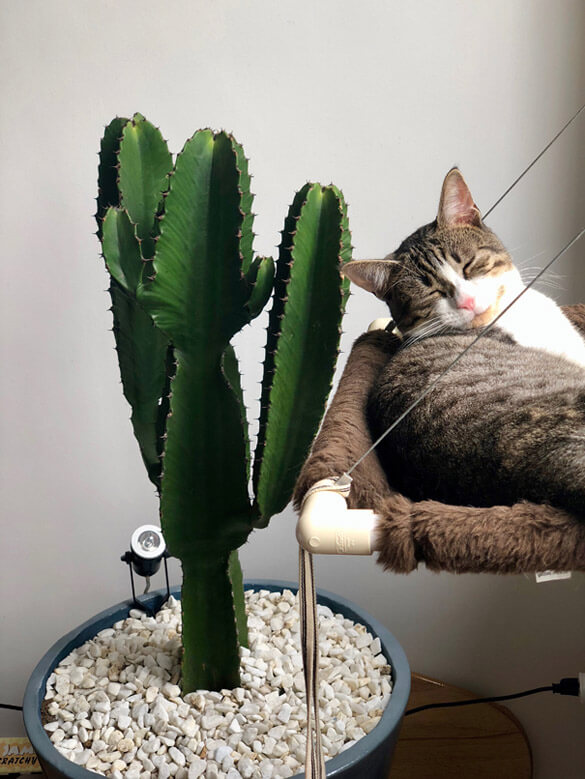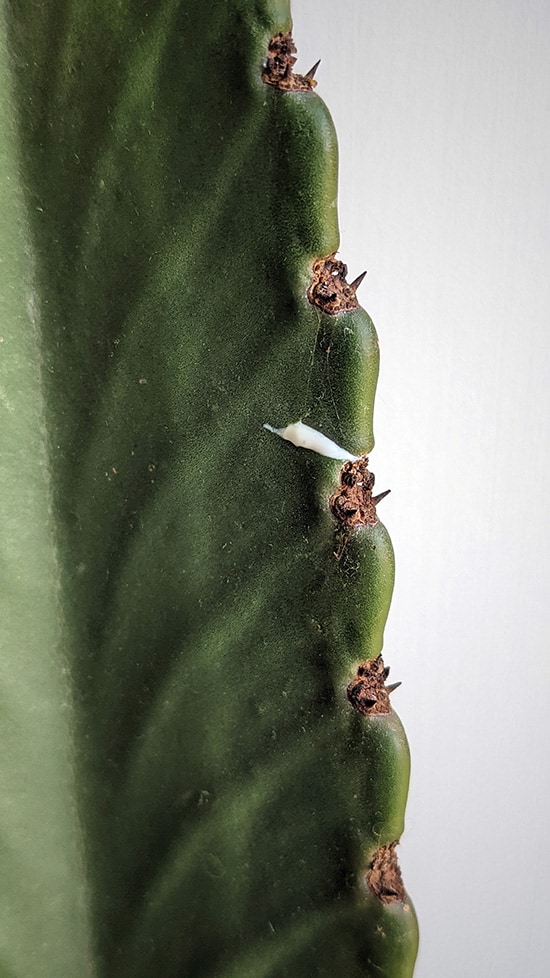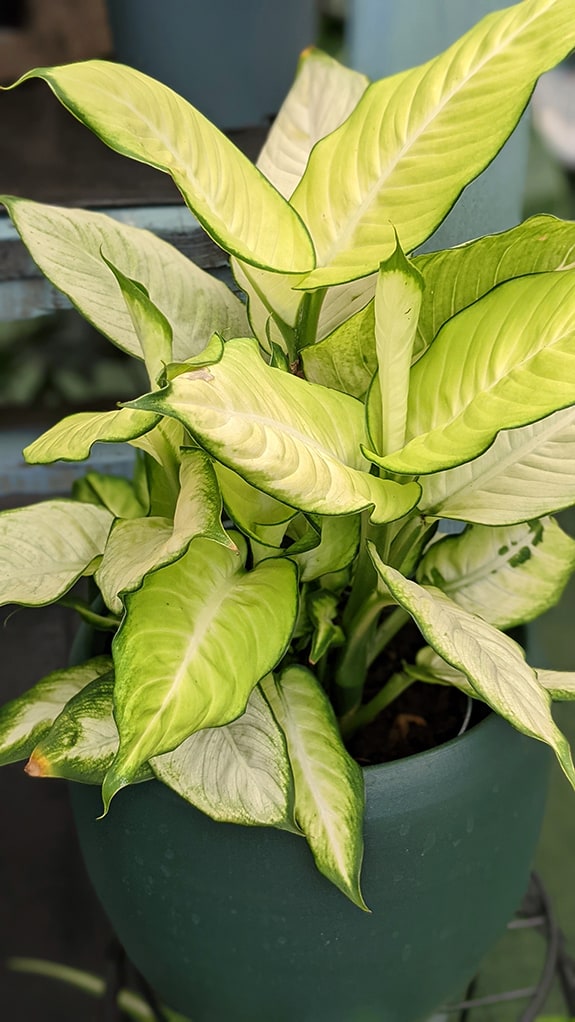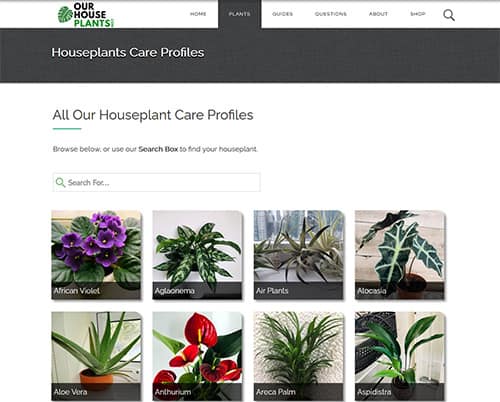Indoor plants can bring harmony and enhance homes from acting as points of interest to more practical purposes such as improving air quality and improving our mental and physical health.
Often pets and children can live happily in plant filled homes. However, as any pet owner or parent will know, they can be inquisitive, which may lead to problems. So considering how some houseplants may negatively interact with the home's inhabitants is perfectly normal.
It's normal to be concerned about indoor plants when you have pets, but sometimes they can live happily along side houseplants. Photo by Monica Silvestre
In this article I take a look at some ideas surrounding poisonous and toxic indoor common plants, some myths and some ideas to keep in mind for happy pets and little people alike.

Hi, I'm Tom!
If you're like me and enjoy the challenge of growing houseplants and getting them to thrive, then Ourhouseplants can help. This website shares my knowledge and years of growing plants and provides (hopefully) helpful advice on properly caring for your indoor plant friends.
Generally speaking, poisonous or toxic houseplants are simply plants that can cause adverse reactions in animals or people. These reactions are fortunately almost always minor such as mouth or skin irritation or an upset stomach and full recoveries are common.
They can, of course, result in more serious symptoms although this is less likely.
A Euphorbia dripping white sap from a small cut
Euphorbia is good example of a plant that has a sting in it's tail. Most of the plants from this species have spines or thorns to deter people and pets, but they can "bleed" a white latex sap quite heavily if the stems are cut or damaged.
Plants that do this, use the latex to heal and harm. The sap will dry over the wound and stop infection from getting into the plant, but the sap is also designed to deter whatever it was that damaged them in the first place.
If it gets on your skin it could cause irritation or a reaction and this is why it's good practice to wear gloves when touching these plants. Or at the very least wash your hands after handling them.
It's when it gets into eyes or mucus membranes like those found in the mouth that the real trouble starts. This study looked at three patients who got latex sap in their eyes.
The study above makes for potentially eyewatering reading, although spoilers, all three made full recoveries. But it still serves as a reminder that plants are living things and that you should respect them to prevent health issues for you and your family.
Plants are disadvantaged because they're rooted in place and can't flee if attacked by a predator.
It's generally thought that plants evolved over time to produce certain toxins designed to repel animals and people from eating them.
Very few plants have evolved to inflict serious harm simply because it would take considerable energy and effort to produce the toxins needed to do it.
Why bother doing this when all the plant needs to do is create something much more basic, that makes the nibbler feel unwell? Give it a simple adverse reaction like abdominal pain or a sore mouth and it won't be back for seconds.
Many outdoor and wild plants have been grown by humans indoors as houseplants for centuries and over that time, fortunately, the very dangerous plants have not tended to become popular. That makes sense right?
In fact, of all the houseplant profiles I have ever written, only a handful are considered highly dangerous and have the potential to be fatal.
If you take only one thing away from reading this article then it should be that when houseplants are listed as "toxic" or "poisonous" it does not translate into them automatically being deadly.
Naturally, with some, you do need to take care. But most do minimal damage as the toxicity levels are low and usually only affect people and pets significantly if a lot of the plant is consumed.
There is a lot of misinformation out there that, in my opinion, causes unnecessary worry. An example is the famous Dumb Cane (Dieffenbachia), which has a terrible reputation as a highly poisonous and deadly houseplant, but this is largely unfounded.
The Dieffenbachia is a very common houseplant that many people think is bad news because it contains toxic substances in the leaves and stems. But how bad is it really?
The truth is that Dumb Canes are poisonous plants, however it rarely kills human or animal. All parts of the plant have lots of microscope needle-shaped insoluble calcium oxalates and when some unfortunate animal (or person) eats part of the plant, it ends up with a painful and swollen mouth.
A small amount can cause oral irritation and a burning sensation in the mouth. Sometimes if a lot is eaten, the swelling is so bad it causes the pet or person to become mute and prevent them from talking.
This is where the common name of Dumb Cane came from. However, the good news is that it's rarely fatal and is no more dangerous than many other houseplants.
People will tell you the Dumb Cane and Poinsettia are toxic, which is correct, but that's not the full story.
A 1982 study concluded the "Dieffenbachia (Dumb Cane) may well be the most toxic genus in the Araceae (family)".
However, a more recent study in 2019 disagreed with this claim. They instead concluded that large volumes of the plant need to be consumed for severe effects to occur. Something that is unlikely to happen based on how unpleasant it tastes and what it does in the mouth.
Similarly, when Poinsettias appear in stores, people on social media will warn about how dangerous they are. Most of these plants are grown today by the Ecke family and to show how the plant's toxicity is often overstated, they actually ate the plant live on a TV show to demonstrate it's pretty harmless.
So yes, while many websites and people will tell you the Dumb Cane and Poinsettias are toxic, which is correct, that's not the full story, resulting in people assuming the worst.
In fact, only a handful of houseplants should cause significant worry and we will look at some of those next.
There are only a handful of popular houseplants that you need to be super careful about if you have pets or young children. I would even go as far as suggesting it's worth avoiding the risk completely and not having them around at all.
These would include the Sago Palm (cycas revoluta) and Lilies. Both of these have very strong concentrations of toxins in all parts of the plant and will cause serious issues even if only small amounts are eaten. If you're going to avoid any plant, it would be these two.
Spring bulbs like Daffodils, hyacinths, and tulips. They aren't necessarily more dangerous than other houseplants, but it's how they look that's the problem. Frequently mistaken for onions and if stored in a bag together it's easy for a pet to gobble up in large numbers.
This logic applies to any plant that can look like food and whenever a large volume could be eaten quickly. An example would be the String of Pearls (they look like juicy peas!).
The most dangerous plants in the world are simply not sold as houseplants so we're unlikely to bring them into our homes (phew).
If you want a comprehensive list of common plants that could cause unpleasant symptoms, check out this ASPCA list.
There are many non-toxic and non-poisonous houseplants out there. In all of our plant articles, there is a section in the Care Instructions that details if that particular plant is poisonous or not and where relevant we provide a bit more context surrounding this.
If you're unsure about whether a houseplant you already own (or are looking to buy) is "safe", head to our Plant Hub to find out. You can also look at the ASPCA website for more.
Pet owners (or anyone that's curious) can use our Plant Hub to find out the poisonous house plants you may want to think about avoiding.
That said, "safe" is a relative term. Houseplant enthusiast Tovah Martin says "I keep it simple: None of your houseplants should be eaten by people or pets". And we really couldn't have put it better.
There are some non-toxic plants that can still cause side effects for people and pets. This could be simple things like loss of appetite or other signs of illness like allergy symptoms. Sometimes physical damage from spines or thorns can cause the problem so care does needs to be taken.
Remember, only a few houseplants are very poisonous and the rest that are recognized to be toxic usually require a lot to be eaten to be fatal. Typically, therefore, eating a toxic houseplant will just result in an unwell pet.
The most common symptoms of houseplant poisoning are excessive drooling, confusion, disorientation, vomiting and diarrhea. There is also the possibility of longer term health issues so in many cases it's worth getting things checked out.
I've spoken to Guy Mewha Williams, a vet with over 40 years of experience and he's said serious plant poisoning is rare and he has only seen a handful of cases during his entire career. In fact, the most common poisoning problem was dogs and dark chocolate.
He puts it down to dogs being greedy and enjoying the type of high calorie food humans do. Whereas cats seems to have a bit more intelligence and while curious about some plants, they're cautious around them. Something that most cat owners, including myself, have seen first hand.
However if you have a mad pet that bucks the norm, it's always better to be safe than sorry. Even if kidney failure or liver failure is rare, your pet could still be in pain and need help. So if you think your pet has eaten part of a poisonous indoor plant this is what you should be doing.
Kids can sometimes be just as curious as pets when it comes to indoor houseplants and can easily play with or eat parts of nearby plants.
Thankfully there are very few reported casualties or long term health consequences of children playing with or eating houseplants.
The National Capital Poison Center reports that in 2021 only 3.6% of total exposures were related to plants (both houseplants and garden plants). Additionally between 2017 and 2021 there were so few fatal incidents from plants they didn't even make the "top 10 lists" in any of those years.
Don't get me wrong, these statistics aren't intended to diminish the potential seriousness of the issue, but to demonstrate serious consequences are not a common occurrence for most people. If it does happen, then a full recovery is almost always the outcome.
In most cases therefore, consuming certain plants is likely to make your child slightly unwell but this can be treated. So if you think your child has eaten part of a toxic houseplant this is what you should be doing.
Even if risks are low, and people tend to overreact to the potential dangers, the bottom line is that plants can be given away and replaced but people and pets can't.
Also, if the plant has low toxicity, it could still protect itself in other ways. Spines and thorns can cause harm for example.
With this in mind no one would begrudge you if, for peace of mind, you decided to give your Sago Palm or Euphorbia away after you notice your cat becoming far too interested in it.
Of course, it goes without saying that you do need to be sensible follow these rules to make that happen.



